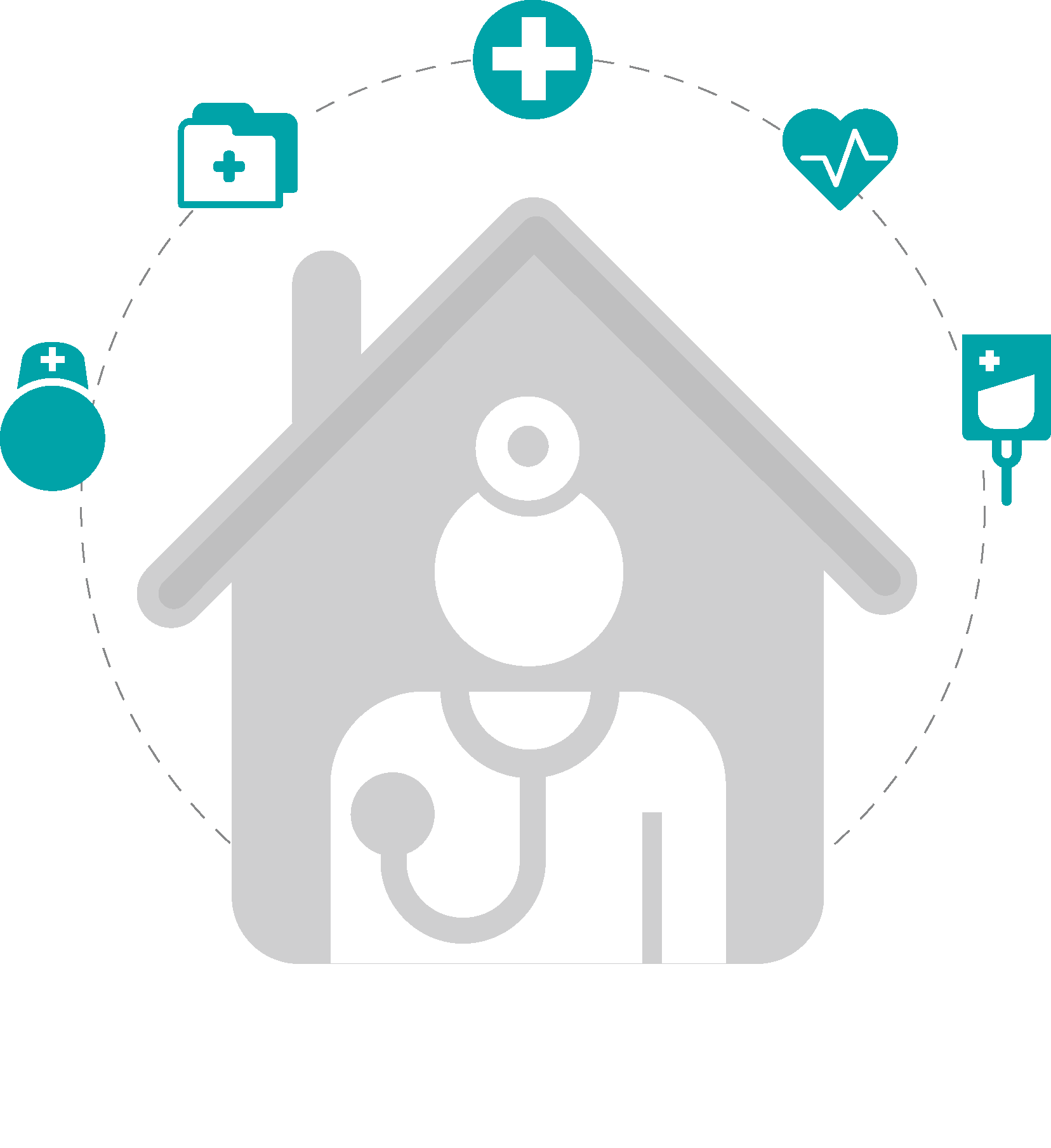The re-emergence of home infusion in a value-based healthcare world
 Ryan Hummel / 12 September 2017
Ryan Hummel / 12 September 20171. Act now
Healthcare executives need to prepare for not if, but when the standard of care shifts even more dramatically to the home. Home infusion provides the opportunity for efficient use of hospital days and effective management of scarce resources, and is a rare win-win for the provider industry.
Whether it is the direct effectiveness of home infusion, or the indirect benefit of mitigating infections and falls, the healthcare economics and outcomes are convincing enough for health systems to act; and act now before rival health systems do.
Healthcare executives understand that safely keeping patients out of the hospital while maintaining connectivity to their outcome in a value based world is the key to a sustainable future and must convince and collaborate with providers to feel the same.
What is home infusion?
Home infusion services are therapies and drugs provided by hospitals, community pharmacies, home health agencies, hospices, retail pharmacies, and specialized infusion firms to treat patients (mostly seniors) with very serious illnesses.
These products are prescribed by a physician or other provider with prescriptive authority; then dispensed and compounded by a pharmacist; and finally infused at home with the assistance another care provider (often a nurse).
With the education provided during the first visit, many of these therapies can be self-administered by patients themselves. These days many infusion therapies are approved by the FDA to treat a variety of ailments.
Several types of cancer, heart disease, infections, intestinal disorders, organ transplant ailments, hemophilia, and even multiple sclerosis have treatments that are compounded at a pharmacy and delivered to a patient’s front door. With the delivery of connected supplies and home medical equipment (HME) such as a pump or IV pole, a nurse or other provider can assist in the administration of the drug.
The advantage of home infusion
Hospital-acquired infections (HAIs) and slips, trips, and falls from inpatient and outpatient care have an enormous impact on the well-being of patients and present a significant financial risk for providers:
HAI’s are many times lethal and the CDC has reported that over 800,000 patients a year are hospitalized because of a fall injury (typically a hip or head injury).1
The American College of Emergency Physicians says more than half of elderly patients (age 65 and older) who visited an emergency department because of injuries sustained in a fall suffered adverse events — including additional falls, hospitalization and death.2
It seems like one of the most obvious statements in healthcare: Patients prefer to receive treatment for their illness in the most comfortable and stress-free location they know— their home. Despite the clear comfort advantages of homecare for infusion therapy, hospitals still dominate as the primary destination for infusion care.
While there have been attempts by hospitals to redesign chemotherapy suites and streamline processes to mitigate the annoyance of machine-beeping, minimize sleep interruption, and spruce up the sterile confines of a hospital bed or suite; insidious risks remain at hospitals that do not exist for patients receiving care in the home.
Hospital infections and the risk of slipping, tripping, and falling on the way to receive care in an outpatient hospital setting continues to burden the healthcare ecosystem with enormous cost implications. In a recent and comprehensive report on hospital-associated infections (HAI), the CDC acknowledges that in one year alone there were about 722,000 HAI and 75,000 of those infections resulted in death.1 These infections are also shockingly expensive – the CDC states the direct medical cost of central line-associated bloodstream infections, or “CLABSIs”, which are preventable bloodstream infections, range from $590 million (adjusted by CPI-U) to $2.68 billion annually; and no region in the country is spared.1 HAIs particularly threaten senior citizens with weakened immune systems and other patients that are immunocompromised.
In addition to these hospital infections, ‘patient falls’ also has a huge patient safety impact. Falls, which are painful and preventable, cost the healthcare industry over $20 billion annually.2 Why not mitigate these unnecessary risks all while helping patients find comfort in their own home?
2. Remove the barriers to home infusion
Healthcare executives should look to expand and refine the way infusion drugs are delivered and administered in the home, but first must overcome some significant challenges to realize the new homecare model:
Fluid interoperability between EHRS to coordinate care:
All visits to homebound patients must be thoroughly documented by the provider and many require pre-visit and continuous bloodwork. Ensuring that information is easily accessible by the cross functional team of pharmacists and care nurses is paramount for effective treatment and care.
Reimbursement model:
Traditional Medicare fee-for-service does not reimburse for many of these services in the home. The Medicare Home Infusion Site of Care Act – (known as “S.275/HR 605”) is bipartisan legislation that would finally enable most home infusions to be covered under traditional Medicare. Note: Medicare Advantage plans, most Medicaid, and Commercial payers do offer fair reimbursement. Payers increasingly see home infusion as a way to improve both patient satisfaction and create better outcomes for patients.
Effective reimbursement and contracting:
There are three parts to the reimbursement model; medical benefit, pharmacy benefit, and DME/Equipment reimbursement; and all have nuances. A proactive and focused effort towards understanding payment options to mitigate delays and encourage much needed rapid pre-authorization for urgent deliveries and pharmacy adjudication is key to treat the patient quickly and ensure appropriate revenue is recognized.
Safe and compliant operational standards:
Repeatable and reliable procedures including prescriptive job aids will ensure each patient gets the same high standard of care. Documenting policies dictated by standards set by regulatory bodies like the USP, FDA, DEA, and The Joint Commission will thwart risk and non-compliance. This is important throughout the life-cycle of a home infusion patient; from pre-discharge teaching through first home delivery, and beyond the first treatment.
3. Seize the opportunities of home infusion
There are comprehensive effectiveness studies on the homecare infusion. Here is a snapshot of the findings of some common home infusion therapies:
Nutrition:
Parenteral nutrition patients are those who receive nutrition through an IV catheter—they can safely commence therapy at home when their care is carefully managed. The study showed even patients at risk of re-feeding syndrome (a rare affliction associated with parental nutrition) have desirable outcomes from home infusion. From a quality of life perspective, it’s apparent that home infusion is advantageous for parenteral nutrition patients. This study found that patients who collect nutrition through a via home infusion could return to eating solid foods within 16 months or fewer, which is a goal for many patients.3
Congestive heart failure (CHF):
CHF is a common chronic illness that is prevalent in 5.7 million people in the United States. Inotropic therapy, infused medication that directly affects the strength of contraction of heart muscle, has shown to be an effective way to manage this chronic illness.4 Late-stage CHF patients discharged home on inotropic infusion therapy have a significantly lower readmission rate (50%) compared to national data on less-severe patients, per the Walgreens outcomes study.3
Hereditary angioedema (HAE):
7HAE is a rare, life-threatening genetic immune system disorder that causes sudden episodes of swelling that can be dangerous and painful. Approximately 65% of patients with HAE received emergency infusion at home within less than an hour of symptoms.
Intravenous (IV)/subcutaneous (SUBQ) imunoglobulin (IG) therapy:
These high-priced infusions are provided for patients who are stricken with a variety of immune-deficiency and immune-mediated autoimmune conditions. In a study of more than 4,000 consecutive infusions in 420 home infusion IVIG patients over 12 months, 99% experienced no or only mild adverse reactions (such as headache) and none experienced serious adverse reactions.3 These types of infusions allow patients to live a full life outside of their therapy; which would not be the case in the hospital setting.
In this study a staggering 92% received it within two hours. This is compared to an average emergency room wait of 3.2 hours, per one study found in the article. The study showed home infusion for HAE is significantly more cost effective than outpatient and ER administration. Even more powerful are home infusion nurse visits, which costs $150 on average compared to an emergency room visit for HAE, which typically run over $2,000.3
Hemophilia:
Hemophilia is a disorder in which blood dangerously does not clot. A comprehensive chart review of 2,650 male patients’ experience for hemophilia therapy found that 28.6% of home infusion patients vs. 32.2% of medical setting infusion patients had a hemorrhagic bleeding complication.3
4. WHAT HEALTHCARE EXECUTIVES SHOULD BE THINKING ABOUT NEXT:
For decision-makers looking to refine and optimize an existing home infusion service-line or those looking to establish one, here are the top three opportunities we suggest exploring to combat the formidable barriers to success:
Define comprehensive organizational change roadmap:
Whether a group is initiating or refining their home infusion practice, matching variable patient demand is tricky and building a sustainable team structure to ensure compliant and productive working conditions are paramount. Creating the most effective cross-functional team of competent compounding pharmacists, nurses, and patient coordinators enables a safe, successful and solvent service-line and allows for a smooth transition for patients and their families who may not have familiarity with home infusion therapies. Ensuring that front line team members are experts in complete referrals and proper authorization (especially those complicated pre-authorizations) will support a team-based approach in meeting patient needs.
Keep score to succeed:
From patient engagement to compliance to financial statements, all team members should know how the infusion service-line is performing. Whether it’s an automated dashboard, or weekly scorecard that’s posted in each department, this strategy of ‘keeping the score’ helps organizations target and eliminate sources of waste in daily operations. To quote the great coach Vince Lombardi, “if you’re not keeping score, you’re just practicing”.
Align the people and technology with sound processes:
Sound methods for procuring, storing, and transporting home infusion drugs require evolving resources and compliance; new drugs, dosages and therapies emerge frequently. These expensive specialty therapies are less stable and have a shorter shelf-life than most drugs. Once compounded, the drugs sometimes have only hours before they are ineffective and unsafe; lean processes are vital. Allocating dedicated teams to map out current flows, identify real opportunities to refine, and then implement holistically should be part of any leaders’ high priority list.
Robust financial scrutiny and analysis:
A refined P&L for each therapy may be in order, to ensure a fair contract has been established. That means due diligence on reimbursements for the drugs, the equipment, and the nursing visit home must take place proactively. It also means answering some key questions like whether you want Medicare home health accreditation, or if you’ll employ homecare nurses or outsource that function. Taking the time to strategically answer these questions will help drive financial success.
End Notes
- Centers for Disease Control and Prevention, Division for Heart Disease and Stroke Prevention. Heart Failure Fact Sheet. June 16, 2016. Retrieved April 12, 2017.
- Soriano, T. A., DeCherrie, L. V., & Thomas, D. C. (2007, December). “Falls in the Community-Dwelling Older Adult: A Review for Primary-Care Providers”. Clinical Interventions in Aging. 2007 Dec; 2(4): 545–553. Retrieved April 3, 2017.
- Polanski, J., Kowal, M., Gagnon, M., Brennan, T., & Shrank, W. “Home Infusion: Safe, Clinically Effective, Patient Preferred, and Cost Saving.” Healthcare. October 13, 2015. Retrieved April 1, 2017.
- Gun, C., Piegas, L. S., Bianco, A. C., Freire, R. B., Ramos, R. F., & Timerman, A. “Value of the Use of Milrinone in the Treatment of Acute Crisis in Patients with Congestive Heart Failure.” Arq. Bras. Cardiol. September 1995. Retrieved April 3, 2017.

About Vynamic
Vynamic, an Inizio Advisory company, is a leading management consulting partner to global health organizations across Life Sciences, Health Services, and Health Technology. Founded and headquartered in Philadelphia, Vynamic has offices in Boston, Durham NC, New York, and London. Our purpose is simple: We believe there is a better way. We are passionate about shaping the future of health, and for more than 20 years we’ve helped clients transform by connecting strategy to action.
Through a structured, yet flexible delivery model, our accomplished leaders work as an extension of client teams, enabling growth, performance, and culture. Vynamic has been recognized by organizations like Great Place to Work and Business Culture Awards for being leaders and innovators in consulting, company culture, and health. Visit Vynamic.com to discover how we can help transform your
organization or your career.
Want to learn more? Get in touch!
Other insights.
Jump to a slide with the slide dots.
Scenario Planning Infographic
Boost launch readiness with scenario planning. Learn 5 steps to stay proactive in today’s unpredictable market. Download the infographic.
Read more Brian Stamm
Brian Stamm
AI-Powered Decision Making to Simplify Your Launch Journey: Vynamic Experts on LaunchNav
LaunchNav by Inizio simplifies pharma launches with AI-driven insights, real-time benchmarks, and 800+ launch learnings.
Read moreThe One Big Beautiful Bill Act: Implications for the U.S. Health Industry
OBBBA reshapes U.S. healthcare with $1.2T cuts, shifting risk to providers, payers, and pharma. Explore impacts and strategies.
Read more